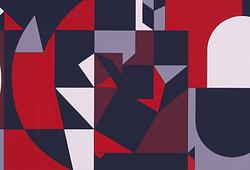Axel Sjöberg
"Ejdersträck" (Common Eiders at Dusk)
Signed ”Axel Sjöberg”. Also signed ”Axel Sjöberg” on the reverse. Watercolour on paper 18 x 26 cm. Verso: Study of a Capercaillie.
Täydennyslista
Wrong title in the printed catalogue. Correct title should be "Ejdersträck" (Common Eiders at Dusk).
Alkuperä - Provenienssi
The artist's deceased estate; private collection.
Muut tiedot
Probably executed around 1900 when Sjöberg lived on the island Långvikskär situated outside the island of Nämndö in the outskirts of the Stockholm archipelago. In 1884, the island was largely bought by the American diplomat William Widgery Thomas following a hunting expedition on the island. In 1983 his grandson sold the island to Skärgårdsstiftelsen, an ideological foundation that owns substantial parts of the Stockholm archipelago. Axel Sjöberg arrived on the island in the 1890s and returned there regularly for some 40 years. Sjöberg is closely affiliated with the culture on the island and the house that Thomas had built is today used as accommodation for recipients of the Axel Sjöberg fellowship.





































